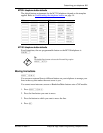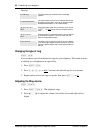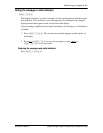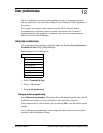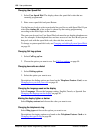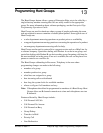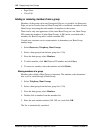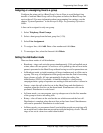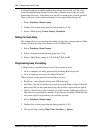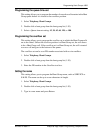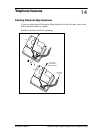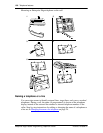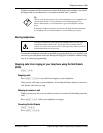
Programming Hunt Groups 103
P0908510 Issue 01 Enterprise Edge Feature Programming Telephone Guide
Assigning or unassigning lines to a group
Configure the prime set for a Hunt Group’s line to None to avoid delayed ring
transfer of external Hunt Group calls to the prime set before the Hunt Group can
receive the call. For more information about programming line settings, see the
chapter “System Operations” in the Enterprise Edge Programming Operations
Guide.
A line can be assigned to only one group.
1. Select Telephony, Hunt Groups.
2. Select a hunt group from the hunt group list (1-30).
3. Select Line Assignment.
4. To assign a line, click Add. Enter a line number and click Save.
5. To unassign a line, select the line and click Delete.
Setting the distribution mode
There are three modes of call distribution:
• Broadcast—rings each set in the group simultaneously. Calls are handled one at
a time; other calls are queued. As soon as a call is picked up, the call next in the
queue is presented to the Hunt Group without having to wait for queue time-out.
• In Broadcast mode, a single incoming call rings simultaneously at all the sets in
a group. This way, all receptionists in the group can share the load of answering
large volumes of calls. All sets automatically display the calling line
identification (CLID), if available. A familiar example is a fund-raising
campaign where a group of operators are waiting to take each call as it comes in.
• Linear—starts the call at the first set in the Hunt Group and distribution is
complete when the first free set has been found. Simultaneous calls can be
presented. Distribution is order based.
• In Linear mode, you can program your top salesperson to be the first member
of the group to receive incoming calls.
• Rotary—the call starts at the set after the one which answered the last call.
Distribution is complete when the next free set has been found. Simultaneous
calls can be presented. Distribution is order based.
• In Rotary mode, you can ensure that all your helpline people are receiving calls
on an equal basis, rather than one person receiving the majority of calls. The call
rings at one set at a time in a round robin fashion.



